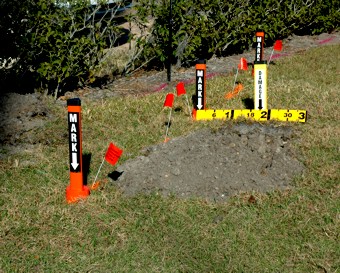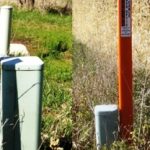Safe digging tips and practices | call 811
April is National Safe Digging Month. With spring’s arrival comes a host of outside digging projects making this the perfect time to list safe digging tips and practices. If you’re planning an excavation project, whether you’re a contractor or homeowner, consider the following:
Call before you dig
 |
|
The Rhino HIT Kit provides the proper materials needed to document a dig before an excavation. Why risk costly litigation from hitting a line when a simple photograph and using the HIT Kit can keep you out of court? |
- Know your state’s One Call Law.
- Call 811 before digging.
- Wait two full business days for the utility companies to visit the site and mark the approximate location of the utility lines with paint or flags.
- Understand the marks. The utility locates will be color-coded and represent the approximate location of the facilities and are valid for only 15 days. Mark the excavation area in white.
- Dig carefully, keeping in mind your state’s tolerance zone which could be 18” to 24” on either side of the line.
Ten safe digging practices
- Dig with only rounded or blunt-edged tools. Hand digging, vacuum excavation, soft digging, and pneumatic hand tools are fine. Using axes, picks, posthole diggers, pry bars, mattocks mechanized equipment often results in damaged utilities.
- If you are a contractor, consider using a Hit Kit to document the dig.
- When digging, keep the face of the shovel parallel with the utility markings.
- Do not assume there is only one utility line, and while it is typical for facilities to be buried at a specific depth – do not assume it.
- When the utility line is visible during excavation, keep the shovel parallel with the line.
- Carefully remove soil away from the utility line without striking it or prying against it.
- Never expose unnecessary portions of the line as it will make it vulnerable to the surroundings.
- Never try to move a utility line.
- If you hit, scrape, dent or damage the pipeline in any way, contact the pipeline operator.
- If you have a gas leak, move upwind of the hit. Alert anyone in the area to step away and call 911 when you are a safe distance from the leak. Do not operate electrical equipment, machinery or even a cell phone around a gas leak.
I hope these tips on excavating are helpful.
Related article:
Natural gas leak detection and what to do

